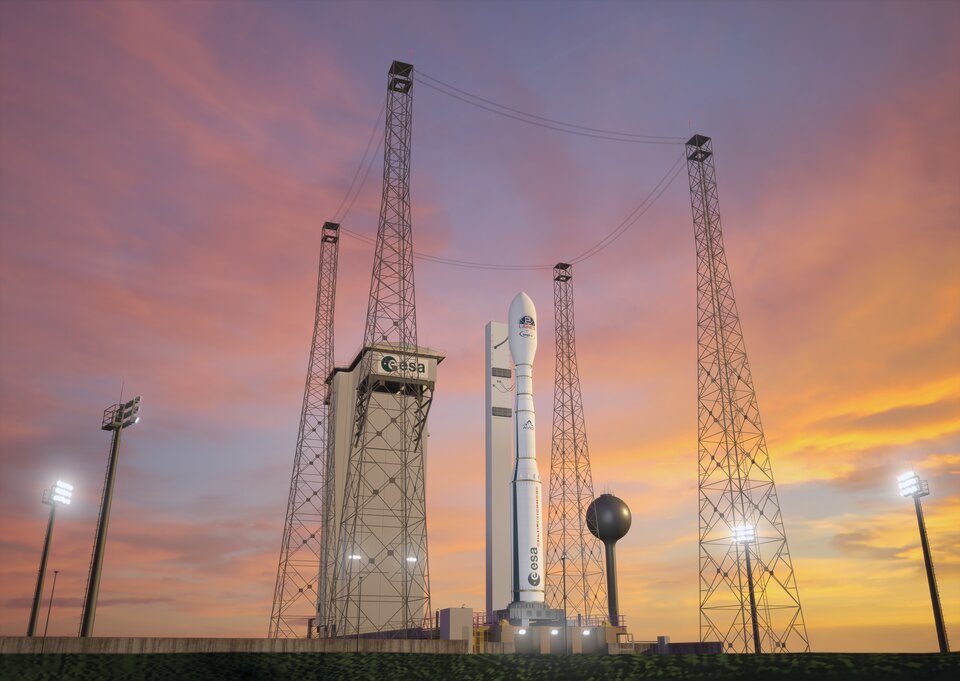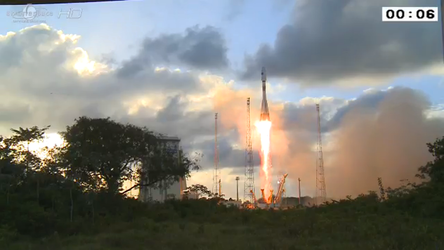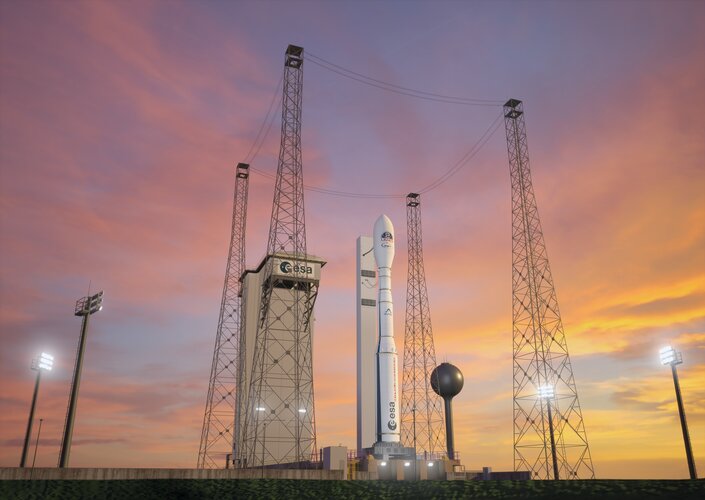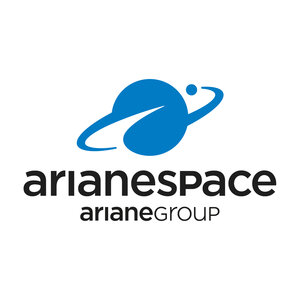Ride into orbit secured for Sentinel-1C
A contract signed with Arianespace secures the launch for the third Copernicus Sentinel-1 satellite. Scheduled to lift off on ESA’s new Vega-C rocket from Europe’s Spaceport in French Guiana in the first half of 2023, Sentinel-1C will continue the critical task of delivering key radar imagery for a wide range of services, applications and science – all of which benefit society.
Carrying advanced radar technology to provide an all-weather, day-and-night supply of imagery of Earth’s surface, the ambitious Sentinel-1 mission has not only raised the bar for spaceborne radar, but also set the stage for Copernicus, the Earth observation component of the European Union’s space programme.
Copernicus has been the largest provider of Earth observation data in the world for some years now. The suite of Sentinel missions deliver complementary data and the range of services offered through Copernicus help address some of today’s toughest environmental challenges such as food security, rising sea levels, diminishing ice, natural disasters, and the overarching issue of the climate crisis.
In April 2014, Copernicus Sentinel-1A was the first satellite to be launched for this remarkable environmental programme.

With the mission comprising two identical satellites orbiting 180° apart to image the planet with a repeat frequency of six days, down to daily coverage at high latitudes, Sentinel-1B was launched in April 2016.
Sentinel-1A has already exceeded its design life of seven years – but is still going strong and expected to be in service for several years to come.
Sentinel-1B, on the other hand, is currently unavailable due to a technical anomaly, so it is important to get Sentinel-1C into orbit and operational as soon as possible.
The contract, which ESA signed today on behalf of the European Union by ESA’s Director of Earth Observation Programmes, Simonetta Cheli, ESA’s Director of Space Transportation, Daniel Neuenschwander, and CEO at Arianespace, Stéphane Israël, ensures Copernicus Sentinel-1C’s ride into space on a Vega-C rocket from French Guiana.
Simonetta Cheli said, “All of the Sentinel satellites ESA has developed and built for the European Union’s programme have been resounding successes and at the heart of this world-class environmental programme. The Sentinel-1 mission is key to delivering radar data to monitor sea ice, track icebergs and glaciers, subsidence, oil spills and much more. With many users relying on these data, we are extremely happy to secure the launch for Sentinel-1C on an ESA Vega-C rocket, furthering ESA’s autonomous access to space.”
Stéphane Israël added, “Once again, we are very proud of this new launch contract with the European Space Agency, in charge of the Copernicus space segment, which underlines our long-standing partnership. For Arianespace, this contract is a further sign of the renewed confidence in the Vega system and it’s reaffirmed its ability to meet users’ innovative needs.”

Vega-C is more powerful than its predecessor and is capable of a wide range of mission types. It is a single body rocket about 35 m high with a mass at liftoff of 210 tonnes. It is able to place about 2200 kg in a reference 700 km-polar orbit, meeting the needs of European institutions and industry.
The Vega-C rocket will place the Sentinel-1C satellite, which weighs around 2.3 tonnes, in a Sun-synchronous orbit at an altitude around 690 km.
Ramón Torres, ESA’s Sentinel-1 Project Manager, noted, “Sentinel-1C is currently undergoing the last stage of its test campaign. This includes environmental tests where the whole spacecraft is exposed to the mechanical and noise stresses that it will experience during launch, and the thermal, vacuum and radiation environment from where the satellite will be operating for the next years.
“Upon successful results, the full acceptance for flight is planned end of 2022”.
Join us at ESA’s Living Planet Symposium in Bonn
Being held on 23–27 May 2022 in Bonn, Germany, ESA’s prestigious Living Planet Symposium offers attendees the unique opportunity to hear first-hand about the most recent developments in the field of Earth observation. Attendees will be able to hear about the latest scientific findings on our planet and how observing Earth from space supports environmental research and action to combat the climate crisis, learn about novel space technologies and about the new opportunities emerging in the rapidly changing sector of Earth observation. This exciting event not only attracts scientists and academics, but also those working in the space industry, institutional stakeholders, data users, students and citizens – an amazing opportunity to all meet in-person after the Covid pandemic.
More information and registration details can be found at the Living Planet Symposium website.















 Germany
Germany
 Austria
Austria
 Belgium
Belgium
 Denmark
Denmark
 Spain
Spain
 Estonia
Estonia
 Finland
Finland
 France
France
 Greece
Greece
 Hungary
Hungary
 Ireland
Ireland
 Italy
Italy
 Luxembourg
Luxembourg
 Norway
Norway
 The Netherlands
The Netherlands
 Poland
Poland
 Portugal
Portugal
 Czechia
Czechia
 Romania
Romania
 United Kingdom
United Kingdom
 Slovenia
Slovenia
 Sweden
Sweden
 Switzerland
Switzerland

































